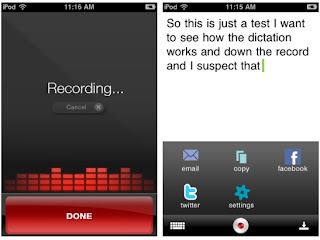ABSTRACT
Voice technologies have just been put into commercial use recently because the computing resource needed by SR (Speech Recognition) and TTS (text-to-speech) is very large. In the mid to late 1990s, personal computers started to become powerful enough to support ASR/TTS .The two key underlying technologies behind these advances are SR and TTS. SR means to transform our speech into text mode; TTS means to transform text into voice output.
Our Application deals with speech, IDE recognize the speech comming from the microphone and convert it into Text and tagging for IDE as well as the Speech applications are like conversations between the user and the computer. Conversations are characterized by turntaking, shifts in initiative, and verbal and nonverbal feedback to indicate understanding.
A major benefit of incorporating speech in an application is that speech is natural: people find speaking easy, conversation is a skill most master early in life and then practice frequently. At a deeper level, naturalness refers to the many subtle ways people cooperate with one another to ensure successful communication. An effective speech application is one that simulates some of these core aspects of humanhuman conversation. Since language use is deeply ingrained in human behavior, successful speech interfaces should be based on an understanding of the different ways that people use language to communicate. Speech applications should adopt language conventions that help people know what they should say next and that avoid conversational patterns that violate standards of polite, cooperative behavior.
An example of Speech to Text Application in iPhone
Technology:
java(netbeans)
jdbc












0 comments:
Post a Comment